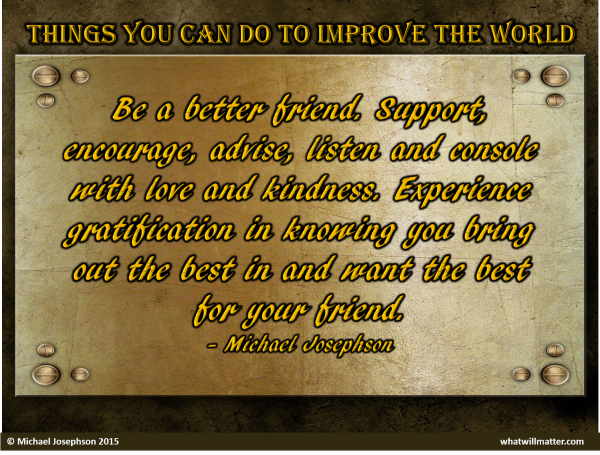In my lifetime, I’ve had the good fortune of having a handful of good friends.
Each of my four teenage daughters have many hundreds. At least that’s what they call every Facebook connection they collect like trophies. The list of those kinds of friends includes people they barely know, some they don’t know at all, and even some people they don’t like.
They also have lots of real friends – people they actually know and spend time with. They profess to “love” and “miss” quite a few and, though it defies the meaning of the word “best” they each have a rotating group of best friends often referred to a BFFs (best friends forever) or BFFLs (best friends for life).
It’s pretty obvious to an old codger like me (using the word codger proves how old I am), that their use of the labels “friend” and “best friend” represents a diluted and naïve concept of the intensity and longevity of friendship.
In relationships, “forever” is, outside of rare exceptions, a romantic illusion borne out of real but transitory emotions. From the perch provided by decades of experience, it’s pretty obvious that none or only a few of today’s BFFs will be in their lives for very long.
This is not to say that these relationships aren’t important or that they don’t provide all kinds of needed comforts such as companionship, validation, support, fun, and caring counsel. But just as lasting and meaningful love is hard to find and sustain, true friendships are rare and, therefore, precious.
Generally, the intensity and longevity of almost all friendships are tied to context, place and time.
Except for friendships with relatives (if you’re fortunate to have any who really are your friends), friendships rarely make the transition from one major stage of our lives to another.
And though we may feel affection for old friends who once played a central role in our lives, unless we have been in regular contact, many of the qualities that made the relationship so special (shared joys and grief in real time, common experiences, intimate knowledge of our thoughts and feelings) just aren’t there anymore.
The insight of age is that even our best friendships usually morph into memories.
Fortunately, the emotions that define these memories are easily re-awakened and enjoyed with even infrequent contact.
Communicating with “old friends” can enrich our lives by bringing our pasts into the present, reminding us of who we were and how we became what we are.
The irony is that Facebook, which seems to promote a watered down version of friendship for my kids, also makes it possible for me to re-connect with a small army of far-flung folks who once played a major role in my life — and I’m glad for that.
This is Michael Josephson reminding you that character counts.
